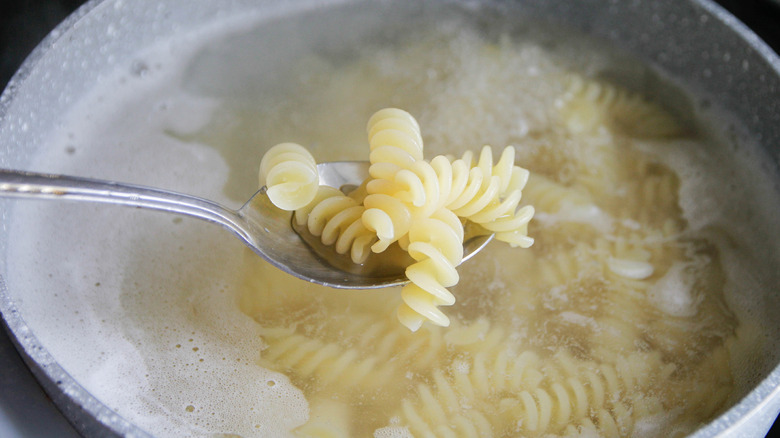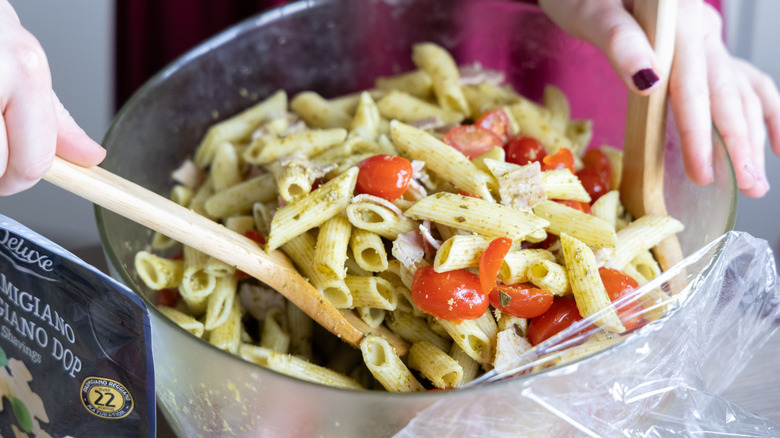The Biggest Pasta Salad Mistake To Avoid This Summer
Pasta salad is a delicious dish that many of us find ourselves eating during the hot summer months, when eating a piping hot bowl of spaghetti bolognese doesn't sound very appealing. Regardless of the time of year, if you're looking to make a perfect pasta salad, then you'll want to ensure you don't make the mistake of rinsing your pasta once it's done cooking.
Rinsing pasta after it's done cooking would normally be considered a culinary crime and possibly sacrilegious to all Italian grandmothers. This is because when pasta cooks in boiling water, it excretes starch, which helps sauce stick to the pasta while also naturally thickening it, adding body, a silky texture, and richness to the dish. However, without immediately adding a sauce to warm pasta and allowing it to cool down with its starches still clinging to it, the pasta noodles then have nothing to cling to except one another. This is a disaster to deal with when adding in a dressing and mix-ins, as one does when preparing a pasta salad.
Whether your pasta is made with a gluten-free flour or traditional durum semolina wheat flour, the rinsing rule still applies when making pasta salad. When cooking your pasta, regardless of the package directions, once it's al dente (meaning the texture is slightly chewy), strain the pasta from the boiling water into a colander. Then rinse the pasta under cool running water, allowing it to drain any excess water out before adding in the dressing and other additions.
If rinsing feels wrong to you, try this method instead
Pasta starch plays a crucial role in both the flavor and texture of pasta, regardless of the dish it's in. For those who can't bring themselves to do the rinse method, there's an alternative for pasta salad that avoids washing off the starch. After straining the al dente pasta, immediately toss it into the pasta salad dressing, just as you would in a sauce, until each noodle is completely coated. It's advisable to have your pasta salad dressing come to room temperature first to prevent the emulsion from clumping. While this approach may be slightly slower than rinsing the starch off pasta, some say it yields a more full-bodied texture and slightly enhanced flavor.
Other ways to further enhance pasta salad include selecting the right pasta size and shape. Opt for medium-sized shapes with crevices, such as penne, farfalle (also known as bow ties), rotini, or fusilli corkscrews, because they can hold onto both hearty mix-ins and the dressing. Another tip is to make or buy a pasta salad dressing using an unsaturated fat, such as olive oil, instead of a saturated fat, like melted butter or coconut oil (but skip Olive Garden's light Italian dressing). Saturated fats solidify at room temperature or when refrigerated, which means if they coat the pasta, it will form an unpleasant, hard outer layer. As for what to mix in — veggies, meats, cheeses, olives, peppers, fresh herbs, or this tangy addition that makes salads extra flavorful — you really can't go wrong here.

